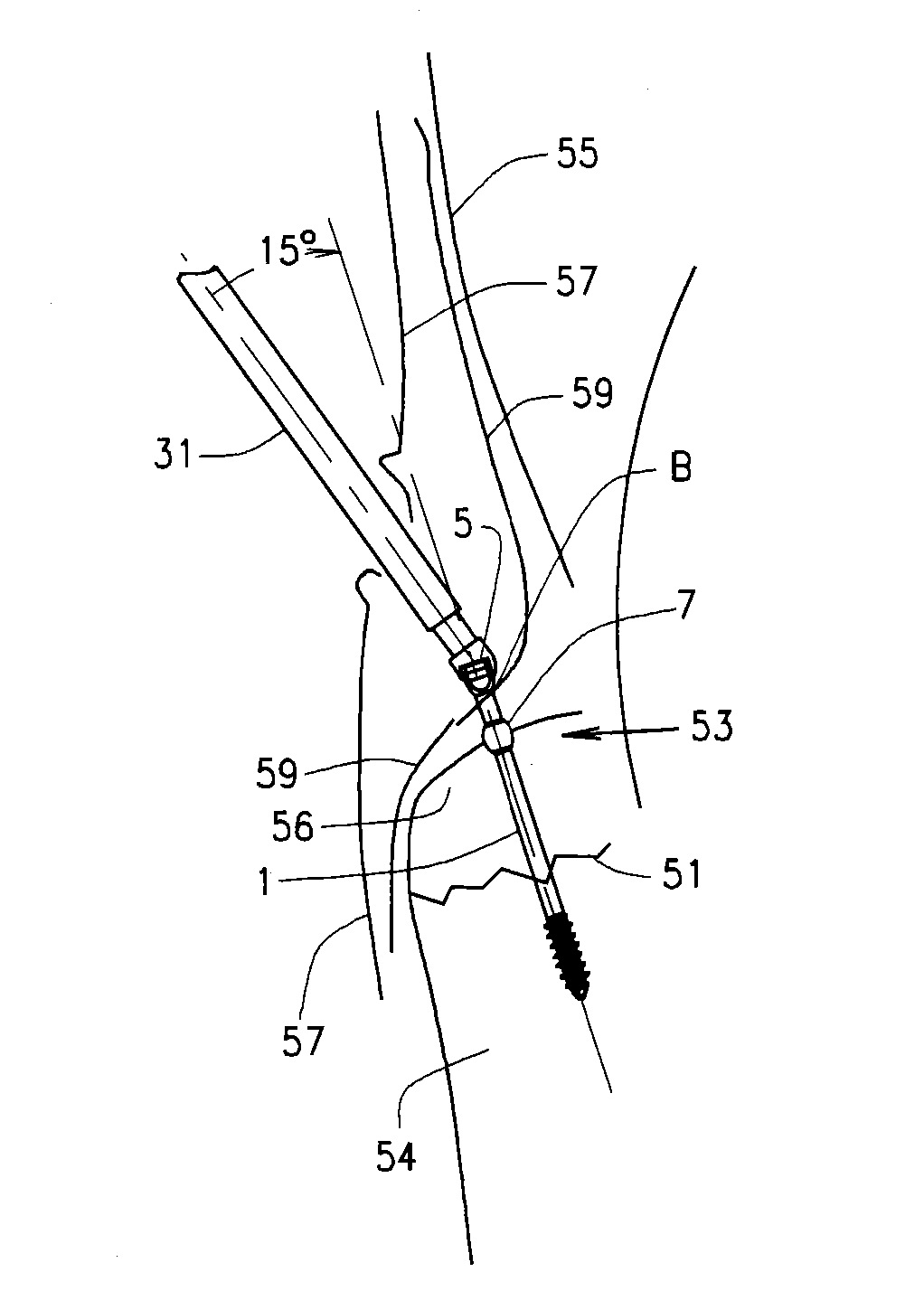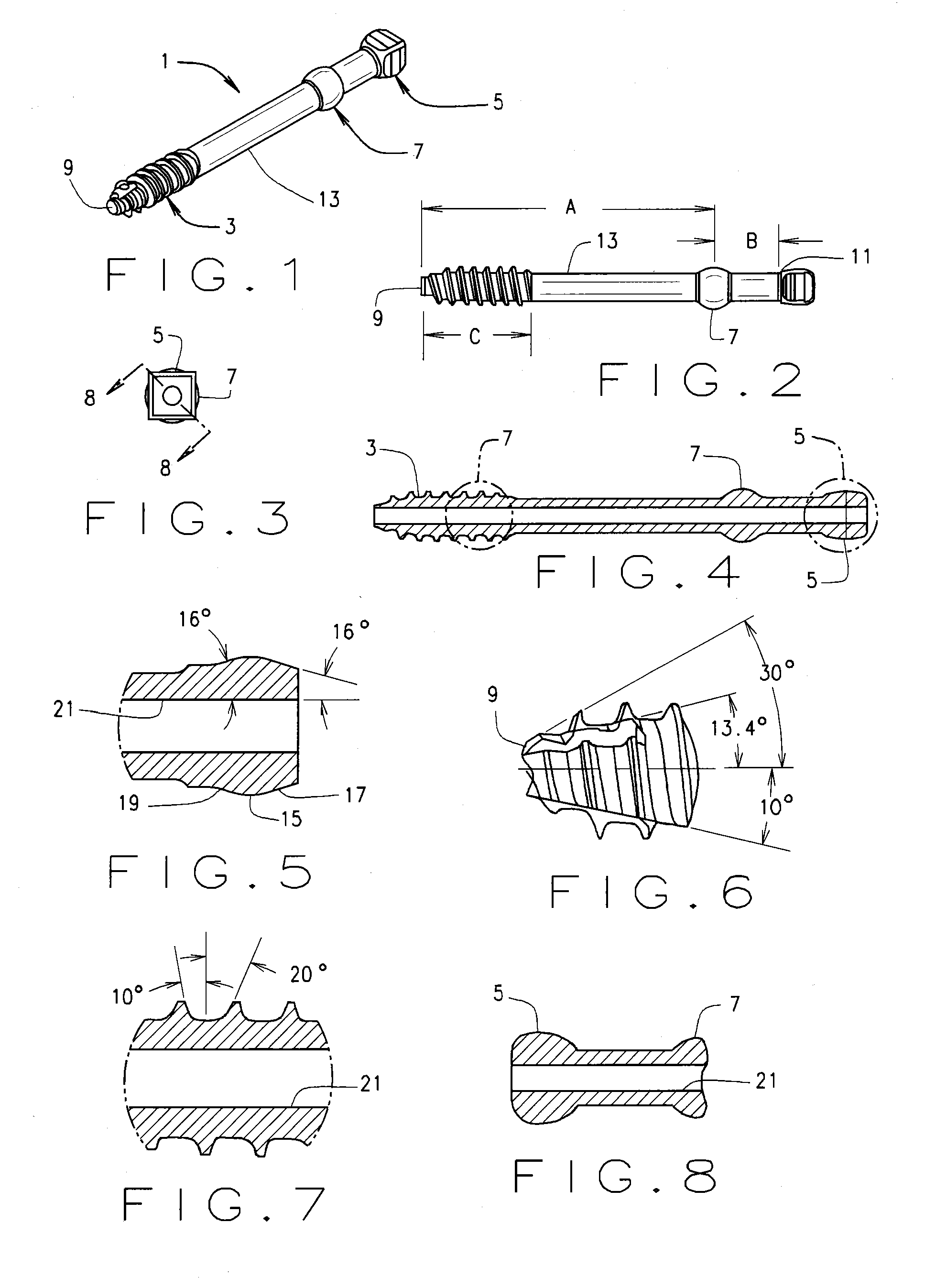Minimal incision removable bone screw, driver, and method of use
a bone screw and mini-incision technology, applied in the field of bone screw driver, can solve the problems of rheumatic or osteoarthritic flare-up, inability to fully understand the long-term deleterious effects of a metal such as stainless steel or titanium alloy implanted in the body, and the removal of the metal requires considerable effort and risk, and achieves the effect of convenient placement and easy removal
- Summary
- Abstract
- Description
- Claims
- Application Information
AI Technical Summary
Benefits of technology
Problems solved by technology
Method used
Image
Examples
Embodiment Construction
[0057]The following detailed description illustrates the invention by way of example and not by way of limitation. The description clearly enables one skilled in the art to make and use the invention, describes several embodiments, adaptations, variations, alternatives, and uses of the invention, including what is presently believed to be the best mode of carrying out the invention.
[0058]As shown in FIGS. 1-8, in accordance with one embodiment, a bone screw 1 comprises a thread 3 at its distal end, a head 5 at its proximal end, and a bone-engaging compression member 7 spaced distally from the head. The screw 1 may be made of any biocompatible material, but is preferably made of stainless steel, titanium, or titanium alloy. In this illustrative embodiment, it is made of the titanium alloy known as Ti6Al4V ELI, with an anodized finish in accordance with SAE AMS2488D.
[0059]The screw 1 is first identified by its diameter and by its length, as in a standard lag bone screw. Diameter is de...
PUM
 Login to View More
Login to View More Abstract
Description
Claims
Application Information
 Login to View More
Login to View More - R&D
- Intellectual Property
- Life Sciences
- Materials
- Tech Scout
- Unparalleled Data Quality
- Higher Quality Content
- 60% Fewer Hallucinations
Browse by: Latest US Patents, China's latest patents, Technical Efficacy Thesaurus, Application Domain, Technology Topic, Popular Technical Reports.
© 2025 PatSnap. All rights reserved.Legal|Privacy policy|Modern Slavery Act Transparency Statement|Sitemap|About US| Contact US: help@patsnap.com



